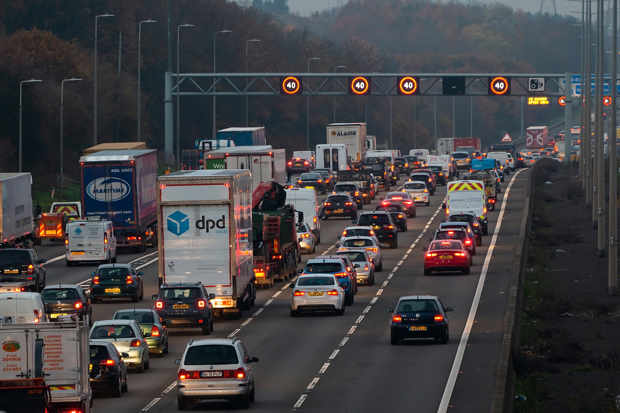Calls for hard shoulder to be reinstated on smart motorways

Seven out of ten drivers want the hard shoulder to be reinstated on the 235 miles of existing all-lane-running smart motorways, according to the RAC.
It believes that this week's decision to scrap 14 all-lane-running schemes needs to be quickly followed by the reinstatement of hard shoulders, as 'this is clearly what the majority of drivers are expecting.'
RAC road safety spokesman Simon Williams said that while the Government’s decision to cancel future smart motorway schemes, which would have seen around dozens more miles of hard shoulder disappearing forever, was a step in the right direction, it wasn't enough.
He stated that by the end of this year, there will still be 250 miles of motorway in England without hard shoulders, which is around 13% of the complete network.
Williams said that installing additional refuge areas and radar technology to help spot stricken vehicles is necessary, but for most drivers, this doesn't go far enough.
According to the RAC, many drivers felt they were dangerous from the outset and now it's clear the Government has lost faith in these types of roads as well. Today, it remains the case that anyone unlucky enough to break down and unable to get to an emergency refuge area remains incredibly vulnerable where the hard shoulder has been taken out.
The Government states that reinstating the hard shoulder would "come at a significant cost" and be "too disruptive," but the RAC's research shows that drivers clearly don't buy this.

Williams stated that it's regrettable that so much public money has already been spent on such deeply unpopular roads, but asks whether the driving public accept anything less than the return of the hard shoulder.
The RAC continues to believe that reinstating the hard shoulder on all stretches of road where they've been converted into a permanent fourth lane is the right thing to do. It would then like to see the Government immediately start monitoring the impact this has on congestion.
Williams added that while all the existing installed technology, including variable speed limits, which helps to manage traffic flow would be retained, it's unclear how much increased congestion there would be due to the overall reduction in road space.
The RAC suggests another option could be to convert as many all-lane-running stretches as feasible into dynamic hard shoulder schemes, such as already exist on parts of the M42, M4, and M5. In these locations, the hard shoulder remains just that through most of the day and night. It is then opened at times of peak traffic to help reduce congestion.
Williams concluded that whatever action the Government decides to take, the status quo, where we still have hundreds of miles of motorway without hard shoulders, simply isn't sustainable. He said that a hotch-potch of different motorway schemes, some with hard shoulders and some without, surely isn't the answer either.

